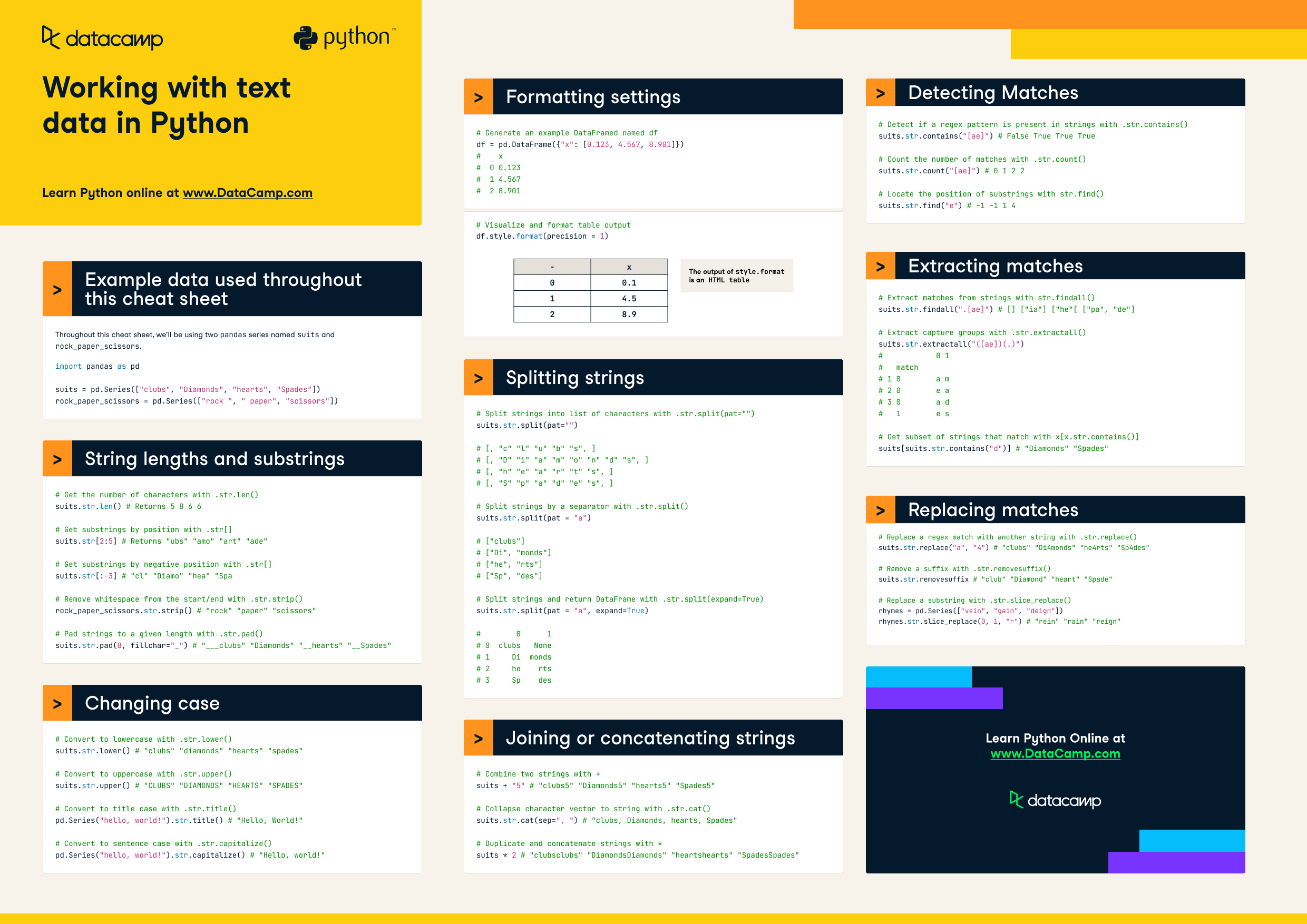Text Data In Python Cheat Sheet
Welcome to our cheat sheet for working with text data in Python! We've compiled a list of the most useful functions and packages for cleaning, processing, and analyzing text data in Python, along with clear examples and explanations, so you'll have everything you need to start developing!
Dec 2022 · 4 min read
Have this cheat sheet at your fingertips
Download PDFHave this cheat sheet at your fingertips
Download PDFTopics
RelatedSee MoreSee More
cheat sheet
Text Data In R Cheat Sheet
Welcome to our cheat sheet for working with text data in R! This resource is designed for R users who need a quick reference guide for common tasks related to cleaning, processing, and analyzing text data.
Richie Cotton
5 min
cheat sheet
Pandas Cheat Sheet for Data Science in Python
A quick guide to the basics of the Python data analysis library Pandas, including code samples.
Karlijn Willems
4 min
cheat sheet
Importing Data in Python Cheat Sheet
With this Python cheat sheet, you'll have a handy reference guide to importing your data, from flat files to files native to other software and relational databases.
Karlijn Willems
5 min
cheat sheet
Python For Data Science Cheat Sheet For Beginners
This cheat sheet covers the basics that you need to know to do data science with Python
Karlijn Willems
1 min
tutorial
Textacy: An Introduction to Text Data Cleaning and Normalization in Python
Discover how Textacy, a Python library, simplifies text data preprocessing for machine learning. Learn about its unique features like character normalization and data masking, and see how it compares to other libraries like NLTK and spaCy.
Mustafa El-Dalil
5 min
tutorial
Python Functions Tutorial
A tutorial on functions in Python that covers how to write functions, how to call them, and more!
Karlijn Willems
14 min
